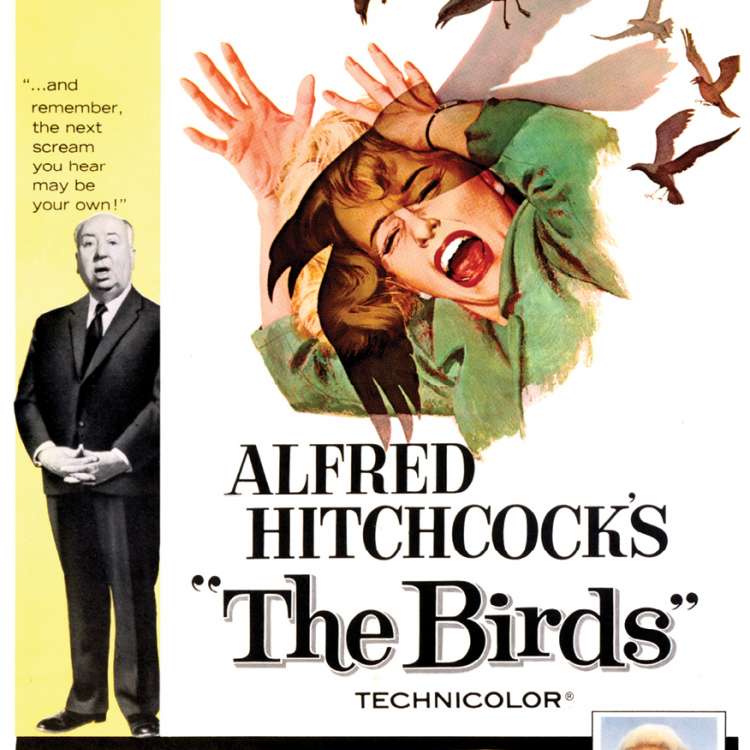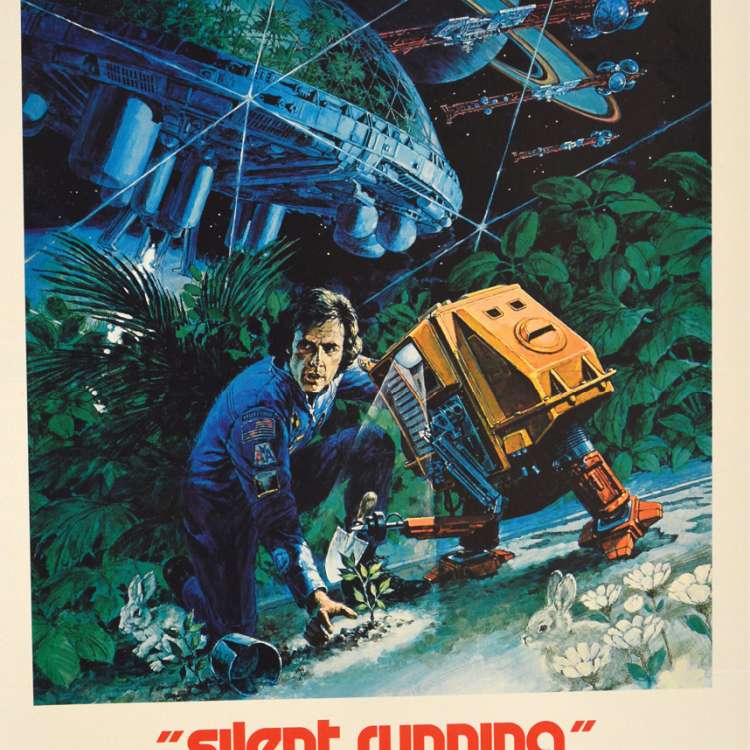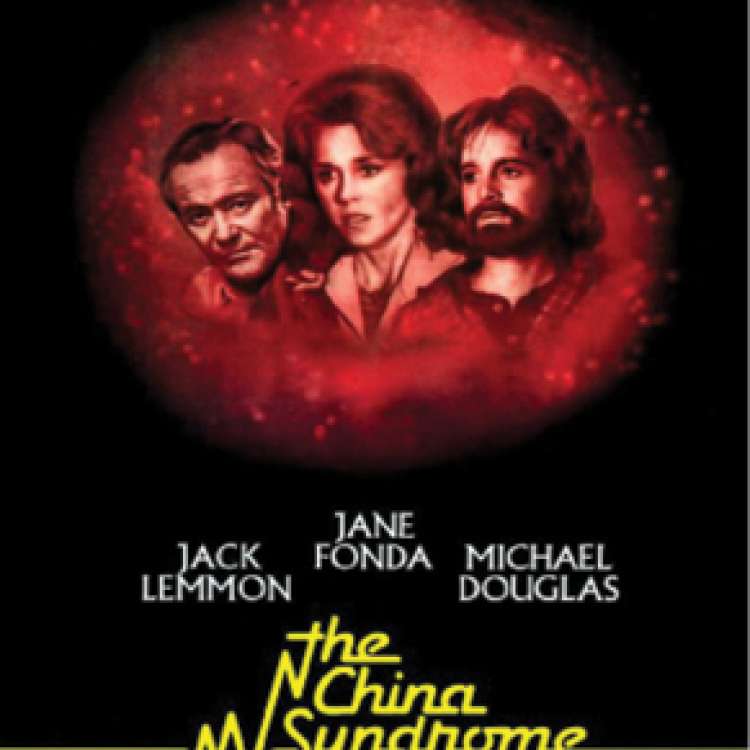Ten Eco Epics
It’s easy to find documentaries about the environment and ecological issues, but narrative films taking on topics of environmentalism are less common. Here are 10 dramatic movies that deal with issues relating to pollution, activism, industrialization, animal rights, and more, while also telling entertaining, engaging stories with strong cinematic visions.
The Birds (1963)
There’s never any clear explanation of what makes birds start attacking humans in Alfred Hitchcock’s unnerving horror classic, and it’s possible to view the avian rebellion as metaphorical, a reflection of the troubled psyche of main character Melanie Daniels (Tippi Hedren) and her unstable relationships. But it’s just as easily viewed as a literal revolt of nature, a response to the pressure that humanity has put on animals and the environment. The movie opens in a store where birds are kept in cages, and Melanie and her potential love interest Mitch Brenner (Rod Taylor) use captive lovebirds as proxies of sorts for their courtship. Are birds tired of being humanity’s playthings? Do they resent the proliferation of people on the inlet of Bodega Bay? Or are they just messing with us? The great thing about The Birds is that it’s about all of those things and more, and it mines terror from the fundamental unknowability of nature.
Silent Running (1972)
The directorial debut of special-effects pioneer Douglas Trumbull still looks astonishing nearly 50 years later, with its masterful use of miniatures and optical effects to bring to life a remote spaceship housing the last of Earth’s plant and animal life. Bruce Dern gives a committed, intense performance as botanist Freeman Lowell, whose dedication to preserving nature comes at the cost of the lives of his fellow crew members and, eventually, his own sanity. Ordered to jettison and destroy the geodesic domes that contain the artificial ecosystems, Lowell instead hijacks the ship and sets off into deep space, seemingly the only human alive who cares about the beauty and wonder of nature, which has disappeared entirely from the future Earth. The somewhat cheesy story is part tragic and part hopeful, holding onto the idea than even in a future when technology has rendered nature obsolete, humanity’s connection to the environment won’t be entirely broken.
The China Syndrome (1979)
Although it’s often grouped with other 1970s conspiracy thrillers like Three Days of the Condor and The Parallax View, James Bridges’ film is more grounded and less sensationalistic, depicting the real possibilities of a meltdown at a nuclear power plant. Jane Fonda and Michael Douglas play journalists who uncover potential safety risks at the fictional Ventana nuclear power plant in Southern California, making themselves targets for the cover-up. Jack Lemmon gives a fantastic slow-burn performance as a plant employee who gradually realizes that his bosses have been lying to him, going from a strict company man to a moral crusader. Although the story is fictional (and was denounced by the nuclear industry at the time), the movie was released less than two weeks before the actual Three Mile Island disaster, underscoring the relevance of the points that the filmmakers raise.
Safe (1995)
Todd Haynes’ deeply unsettling drama is never quite clear on whether main character Carol White (Julianne Moore) is actually being made sick by the everyday chemicals surrounding her, or whether her descent into illness is primarily psychosomatic. But even if Carol’s household products aren’t the sources of her mysterious ailments, she certainly believes that they are and Haynes builds an atmosphere of dread that makes the audience hyper-aware of just how many artificial substances surround us at all times. Carol’s quest to escape from the omnipresent contamination she perceives in her daily life is at times harrowing, and at other times darkly funny. Haynes doesn’t take sides, casting equal suspicion on both Carol’s modern suburban life and her subsequent experience with a cult-like remote retreat. Wherever she is, she’s at the mercy of forces that overwhelm her.
Fly Away Home (1996)
Director Carroll Ballard is known for his heartwarming family movies involving animals (including The Black Stallion and Never Cry Wolf), and this fictionalized version of a true story about migrating geese hits all those familiar notes, along with a gentle but insistent message about humanity’s stewardship of the environment. It’s a coming-of-age story about 13-year-old Amy (Anna Paquin), who loses her mother in a car accident and is sent to live with her estranged, eccentric artist father (Jeff Daniels) in rural Canada. There, she nurtures a flock of geese, displaced by illegal industrial development, eventually guiding them on their 500-mile migration south with the help of ultra-light planes built by her dad. It’s an uplifting story about how people can use technology and ingenuity to correct some of the damage that those same developments have done to the environment we live in.
Erin Brockovich (2000)
Julia Roberts’ Oscar-winning performance is what most people remember about Erin Brockovich, and rightly so: Roberts is fantastic as the fiercely determined title character, who finds purpose in working as an advocate for the residents of a small California town whose water supply has been tainted by chemical runoff. Roberts’ Erin is brash, funny, and likable, and the story of her unlikely courtroom victory against a massive corporation is rousing, and handled with the perfect balance of grit and old-fashioned Hollywood triumphalism by director Steven Soderbergh. It’s also an origin story of sorts, showing how the real-life Brockovich first discovered her passion for environmental and social justice, and how she went from a single mom trying to make ends meet to a committed activist. It’s a perfect illustration of how one person, with limited resources, can make a genuine difference in the world.
WALL-E (2008)
The Earth is literally a giant garbage dump in Pixar’s lovely animated ode to robot love, featuring a sweet romance between the title character (a trash compactor robot roaming the refuse-covered planet) and EVE, a sleek diagnostic robot looking for signs of returning vegetation. They end up on one of the giant spaceships housing the remnants of humanity, who’ve become obese and helpless, entirely dependent on technology for their every need. Director and co-writer Andrew Stanton envisions a colorful and funny world, with Pixar’s typical boundless creativity, but the movie is also a cautionary tale about losing touch with nature and relying too much on conveniences supplied by massive corporations. WALL-E and EVE may be robots, but they’re the ones who recognize the value of nature and manage to bring humanity back down to Earth (literally and figuratively) in the end.
Avatar (2009)
James Cameron’s sci-fi epic is still the highest-grossing film of all time, and it has inspired theme parks and merchandising and four sequels, which are set to be released beginning in 2020. But beyond its groundbreaking spectacle, it’s a parable about the battle between industrialism and environmentalism, embodied in the conflict over the moon of Pandora. The bad guys (military-trained contractors determined to strip-mine Pandora for the priceless mineral unobtanium) and the good guys (the peaceful, nature-connected Na’vi race, native to Pandora) may be broadly drawn, but their epic showdown is still thrilling. Cameron uses the conventions of large-scale blockbuster filmmaking (including the kind of sweeping romance that made his Titanic the previous highest-grossing movie of all time) to deliver an urgent message of respect for the environment and for indigenous cultures.
Night Moves (2013)
Kelly Reichardt’s methodical thriller is about the interpersonal cost of extreme dedication to a cause, with Jesse Eisenberg and Dakota Fanning as environmental activists who take things a bit too far in their plan to sabotage a dam that is disrupting the surrounding ecosystem. The movie mostly follows the aftermath of their actions, as their commitment to the cause, and to each other, wavers and Eisenberg’s character in particular finds himself at odds with the more peaceful, nonviolent environmentalists at the farm and compound where he makes his home. Things gradually take a sinister turn as the paranoia builds, and both main characters drift far from the theoretically altruistic motives they started with. In working to save the planet, they end up losing sight of their humanity.
Deepwater Horizon (2016)
The best of director Peter Berg and star Mark Wahlberg’s true-American-hero movies (Battleship, Lone Survivor) is the story of the 2010 explosion and oil spill aboard the BP drilling rig Deepwater Horizon, off the coast of Louisiana. Wahlberg plays level-headed technician Mike Williams, who helped rescue many of his fellow oil workers, and Berg stages the disaster with visceral excitement, effectively conveying the chaos and danger of what the workers went through. He also clearly shows how corporate corner-cutting led to the disaster in the first place, with Mike and other hard-working BP employees (especially a grizzled veteran played by Kurt Russell) expressing concerns that are frequently ignored. The spill dominated the news cycle for a long time, but the movie brings it back to the people on the front lines, showing how the disregard for environmental safety directly endangered their lives.









